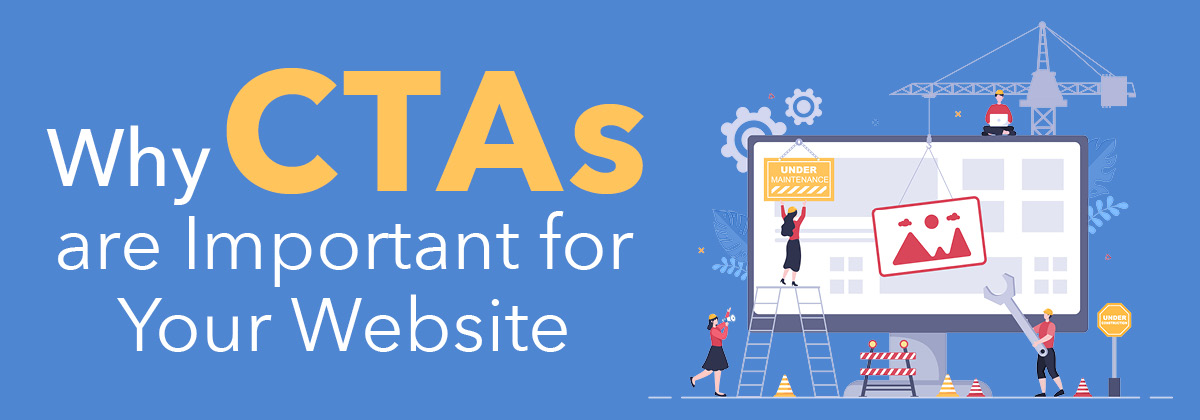
Why CTAs are Important for Your Website
By Veugeler Creative
March 15, 2021
Calls to Action are important tools that point visitors to an item of value on your website.
CTAs are used to guide potential customers through the buyer’s journey, taking them from “prospect” to “lead” to “customer.”
Why are calls to action (CTAs) so important for your business’s marketing efforts? The first step of lead generation is typically triggered by a Call to Action, encouraging website visitors to fill out a form, subscribe to an email list, or even buy your product. A successful CTA can then lead to conversions, which ultimately increases your Return on Investment! And that’s what every business is working toward, right?
What is a CTA?
A CTA is an image or line of text that prompts visitors to your website to take action. It is, quite literally, a “call” to take an “action.” Think of all those buttons, text links or images that have enticed you to do something in order to receive something in return: download, buy, learn, request, click, sign up, subscribe, join, get started, contact, claim. These are all CTAs.
Most CTAs will send you to a landing page with a form that the visitor fill out to receive the offer. Depending on the value of the offer, the form can be as simple as asking for an email address, or it can require more information such as a phone number or company info. Businesses can then use this information to follow up with them in the future.
Why are CTAs important?
CTAs are an important tool for guiding your website visitors through the buying journey. Just think: Maybe some of your website traffic is composed of people who want to do business with you, but simply don’t know how because there are no clear next-step markers on your site. CTAs provide a clear sign to take that next step. By clicking on the CTA and filling out the provided form, the user has now transitioned from a prospective customer to a lead.
Without CTAs, visitors are more likely to leave your website without engaging with any of the content you’ve worked so hard to create — and they’ll take their valuable contact info with them.
CTA best practices
First, you need to make sure your CTA is action-oriented. Be descriptive about the action you want the user to take. Let them know immediately what they’ll receive by clicking the CTA. For example, instead of using the CTA “Download Now,” use a more descriptive CTA such as “Download My E-Book.” This lets visitors know that by clicking the CTA they will be downloading an e-book. In fact, we would suggest being even more specific. For example, “Download My E-Book about CTA Best Practices.”
Next, make sure they stand out from your content. Visually, CTAs need to draw your attention. They shouldn’t be wallflowers who blend into the background and are easily overlooked but should stand out from the other content on your website and demand visitors’ attention. It’s important to consider the size and color of your CTA.
And last but not least, remember location is key. The placement of your CTA is incredibly important. Take into account the buyer persona you’re trying to reach. Consider placing CTAs at the end of relevant blog posts or any pages with content consistent with your offer. And don’t be afraid to try multiple locations until you find the one that works best.
CTAs are an important tool used to guide potential customers through the buyer’s journey, taking them from “prospect” to “lead” to “customer.” They are imperative to helping push visitors deeper into your website, encouraging them to engage with all of the valuable content you’ve produced that will help them make those crucial buying decisions. So, don’t sleep on CTAs, they are the critical first step to generating leads for your business.




